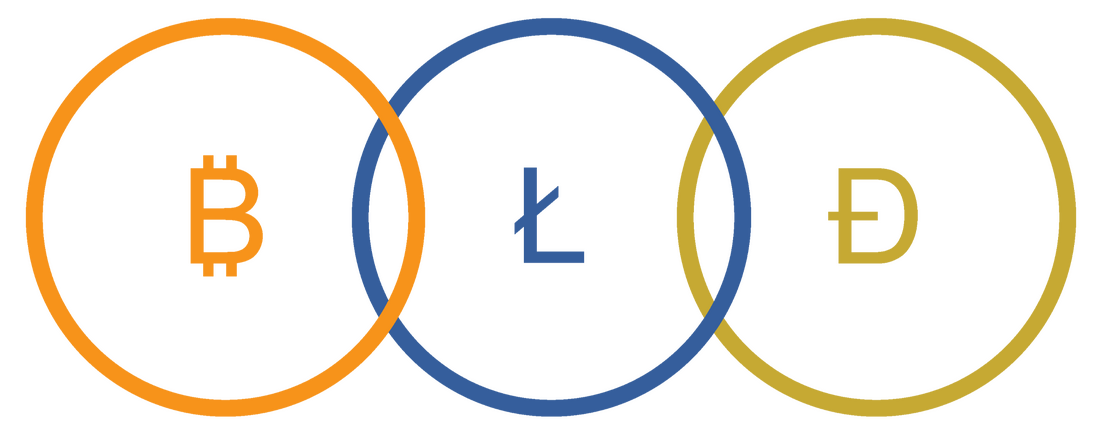
The Nakamoto Standard
Satoshi Nakamoto is responsible for developing the plan and protocol that govern Bitcoin (BTC), Litecoin (LTC), and Dogecoin (DOGE). These three cryptocurrencies — trustless, permissionless, and borderless — constitute the Nakamoto Standard.
Bitcoin: Digital Gold
Satoshi Nakamoto published his famous whitepaper — Bitcoin: A Peer-to-Peer Electronic Cash System — on October 31, 2008. The document described the design and function of Bitcoin, the first blockchain cryptocurrency. On January 9, 2009, Nakamoto published the code for Bitcoin Core version 0.1 and publicly launched the network. Bitcoin's genesis block reward was 50 BTC.Bitcoin is a deflationary asset with a hard-capped total supply of 21 million. Its hashing algorithm is SHA-256.While Bitcoin has been the world's reserve cryptocurrency since its inception, in 2021 it became the official currency of the sovereign nation of El Salvador. Major corporations have also taken a significant interest in Bitcoin and have added it to their balance sheets — these entities include Tesla (TSLA), Microstrategy (MSTR), and Square (SQ).
Litecoin: Digital Silver
Three years to the month after the publication of the Nakamoto whitepaper, Google employee Charlie Lee began working on Litecoin — a cryptocurrency based on the Bitcoin source code but adjusted to improve speed, lower transaction costs, and increase the maximum supply.Litecoin is nearly identical to Bitcoin and, as such, is a deflationary asset with a hard-capped total supply of 84 million. Its hashing algorithm is Scrypt.While Bitcoin is recognized by many as digital gold, Lee designed Litecoin as "the silver to Bitcoin's gold." It is more abundant than Bitcoin by a factor of 4, and it has dramatically lower transaction fees, averaging around $0.02 USD regardless of transacted volume.After Bitcoin, Litecoin is the most liquid and widely available cryptocurrency. The reliability of its network is also unmatched as it has been operating without interruption or fee variance since its 2011 launch. Litecoin is the first Nakamoto currency to achieve on-chain fungibility with its Mimble Wimble Extension Block upgrade and activation in May 2022.
Dogecoin: Digital Copper
Dogecoin (DOGE) was created by software engineers Billy Markus and Jackson Palmer in 2013. The cryptocurrency was intended to be more lighthearted than its peers — indeed, it is the first declared "meme coin" with a Shiba Inu as its dedicated mascot. In its infancy, Dogecoin's adoption was to accommodate digital tipping and micropayments.At its core, Dogecoin is a copy of the Litecoin code albeit with a fixed rate of inflation and without a supply cap — it is an anti-inflationary asset. Dogecoin's hashing algorithm is Scrypt and it is merge-mined with Litecoin.With Bitcoin as digital gold and Litecoin as digital silver, Dogecoin is digital copper. It is the most abundant of the three digital resources yet its chain is an integral component of the Nakamoto Standard. Dogecoin will, for example, provide tail emission rewards for Litecoin miners after the final Litecoins are minted over the next century.
A New Monetary Standard
Humans have held, measured, and exchanged value — or personal energy — in a variety of mediums over the centuries. Some societies traded worth in terms of seashells, while others employed tobacco leaves. While many forms of money have existed historically, all modern societies were built upon a metallic standard. This standard was defined by the recognition and circulation of gold and silver as primary monetary metals defined precisely by weight. It has been said that gold was the money of kings and silver was the money of gentlemen. Copper, more abundant and less dear than both gold and silver, was also circulated within the metallic standard.Most global currencies were as "good as gold and silver" until the mid-1960s and early 1970s when they were officially untethered from their metallic representations by governments.This was where we lost our way.Satoshi Nakamoto understood that the world would never move forward — towards liberty, towards progress — without sound money. He strategically published his whitepaper in the wake of the 2008 global financial crisis and included the following message within Bitcoin's genesis block: "The Times 03/Jan/2009 Chancellor on brink of second bailout for banks."With Bitcoin, Litecoin, and Dogecoin, the world has renewed access to sound money.These Nakamoto currencies — digital gold, digital silver, and digital copper — have appreciated significantly against every major world currency, despite market cycles and volatility, since their respective launch dates. Not only is their technology far superior to fiat currencies in terms of speed, transparency, portability, and security — their programmed scarcity and precise divisibility make them pristine assets and value stores.The Nakamoto Standard is open and available to all without permission or strings attached. We have with Bitcoin, Litecoin, and Dogecoin a new global monetary standard governed by mathematics, time, and voluntary participation.Bitcoin, Litecoin, and Dogecoin allow individuals, organizations, and nations to reclaim and exercise financial sovereignty within the Nakamoto blockchain triad.This is the Nakamoto Standard.
Useful Links
FOUNDATIONAL DOCUMENTS
Bitcoin: A Peer-to-Peer Electronic Cash System
Litecoin - a lite version of Bitcoin. Launched!INFORMATIONAL WEBSITES
bitcoin.org
litecoin.org
dogecoin.com
litecoin-foundation.com
foundation.dogecoin.com
eightyfourmillion.com
lookintolitecoin.comPRICE & MARKET CAPS
Bitcoin
Litecoin
DogecoinGENESIS BLOCKS
Bitcoin Block 0
Litecoin Block 0
Dogecoin Block 0EXCHANGES
gemini.com
coinbase.comWALLETS
Bitcoin Core Wallet (Desktop)
Litecoin Core Wallet (Desktop)
Dogecoin Core Wallet (Desktop)
Bitcoin (Mobile)
Litecoin LiteWallet (Mobile)
Dogecoin (Mobile)
Trezor (Hardware Wallet)
© 2021-22 Nakamoto Standard. All rights reserved.There will be a book. It is being written by two individuals in two separate time zones. Patience is appreciated.